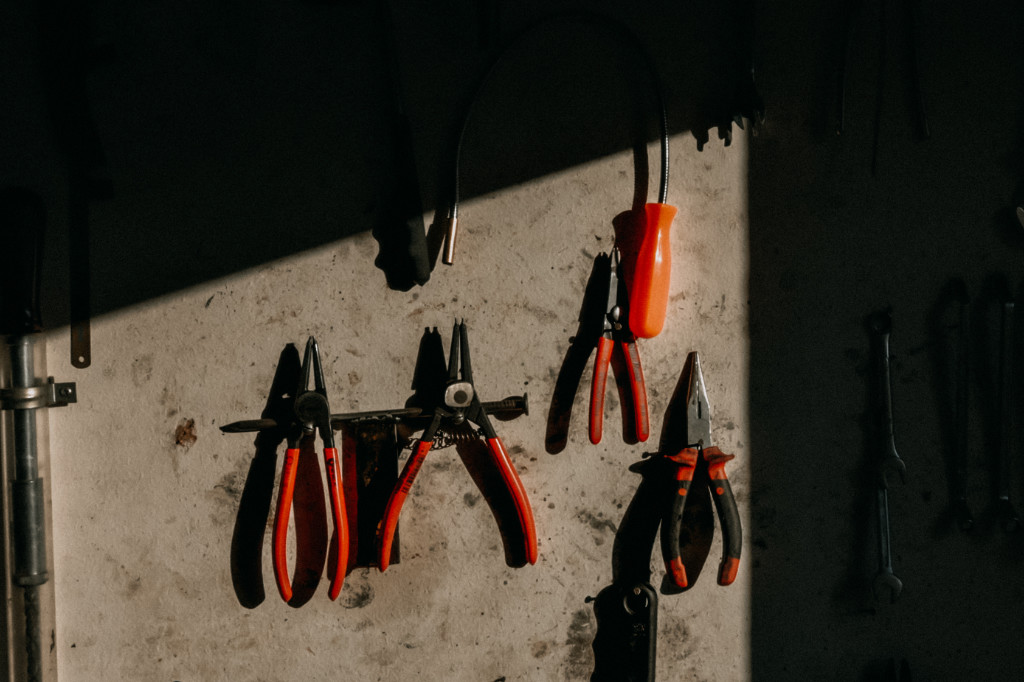A poorly adjusted or even dirty Vespa carburetor quickly turns the Vespa dream into a nightmare. Who doesn’t know it, the image of the tirelessly kicking Vespa rider whose scooter won’t start even after numerous kicks. So that this does not happen, we have created a compact and understandable guide on how to clean the carburetor.
How the carburetor works
To be able to perform the cleaning, it helps a lot to understand the way a carburetor works in the first place.
The carburetor basically has the task of producing a mixture of air, oil and fuel to create the basis for the combustion engine. The lambda 1 value plays an essential role in this process. This states that a well-adjusted carburetor should provide a mixture of 14.7 parts air and one part gasoline. Air is drawn into a constriction through the air filter connection, creating a vacuum and thus spraying the air. This negative pressure also draws in the oil-gasoline mixture from the main nozzle and the two components mix. The float then ensures that the same amount of mixture is always in the float chamber at different speeds.
The role of the main nozzle
Since the mixture is drawn in through the main nozzle, this determines whether the engine runs “too rich” or “too lean” in colloquial terms. With a large main nozzle, more mixture is logically drawn in and the engine runs “richer”. Since the main nozzle has a diameter of only a few millimeters, it can become clogged relatively easily. This means that less mixture is sucked in and the engine gets hot very quickly. As a result, the scooter runs very rough on the one hand, and parts of the engine can be damaged by overheating on the other.
Cleaning the nozzles
In addition to the main nozzle, there is also the secondary nozzle and the choke nozzle, which also play an important role when running in low speed ranges or when starting.
These nozzles in particular clog easily because they have an even smaller diameter than the main nozzle.
Cleaning the carburetor can be done in different ways.
Probably the simplest and most straightforward form is to add certain additives to the tank. As gasoline flows through the carburetor, the addition of special cleaning agents allows the nozzles to be cleaned without having to remove the carburetor. Dell’Orto carburetor cleaner is recommended here as a simple yet effective agent.
In the case of more stubborn contamination, there is usually no alternative but to remove and disassemble the carburetor. Then the individual parts can be easily cleaned. For this purpose, special reamers are needed for the nozzles, which are available in different thicknesses. With the help of these needles, clogged nozzles can be easily cleaned. Since different diameters are installed, it is advisable to use the corresponding set of nozzle reamers to cover all diameters.
After cleaning, it is highly recommended to carefully blow out the carburetor with compressed air. This is the only way to ensure that even tiny particles have been removed.
Ultrasonic bath – the supreme discipline
True professionals swear by the ultrasonic bath when cleaning the carburetor. The float housing is first dismantled before the individual parts are placed in the bath. This means that the nozzles can remain installed and are still cleaned gently and reliably. Particularly hard-to-reach areas are cleaned of dirt and deposits in this way.
In most cases, however, the contamination of the carburetor is not so great that an ultrasonic bath is necessary. In this case, the above-mentioned options are also sufficient to achieve an appropriate result quickly.
Tip: When removing and opening the carburetor, always remember to order new gaskets. The old gaskets often no longer fit, whereupon the carburetor drips.




I’ve had a PX150 since the late 90’s. It still runs with ease and zest. I’ve been lucky I guess in terms of fuel management, 2Toil mixture when loading fuel.